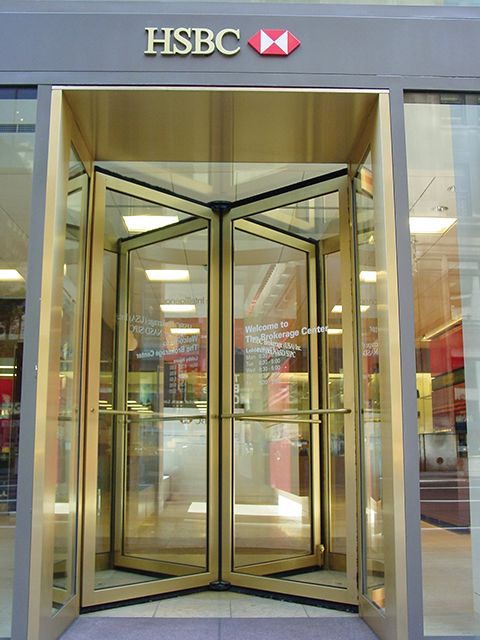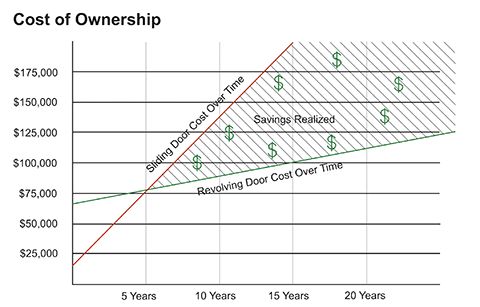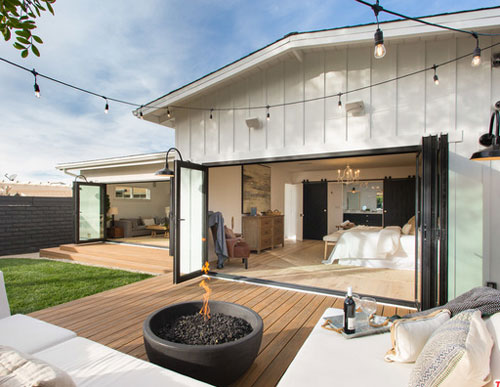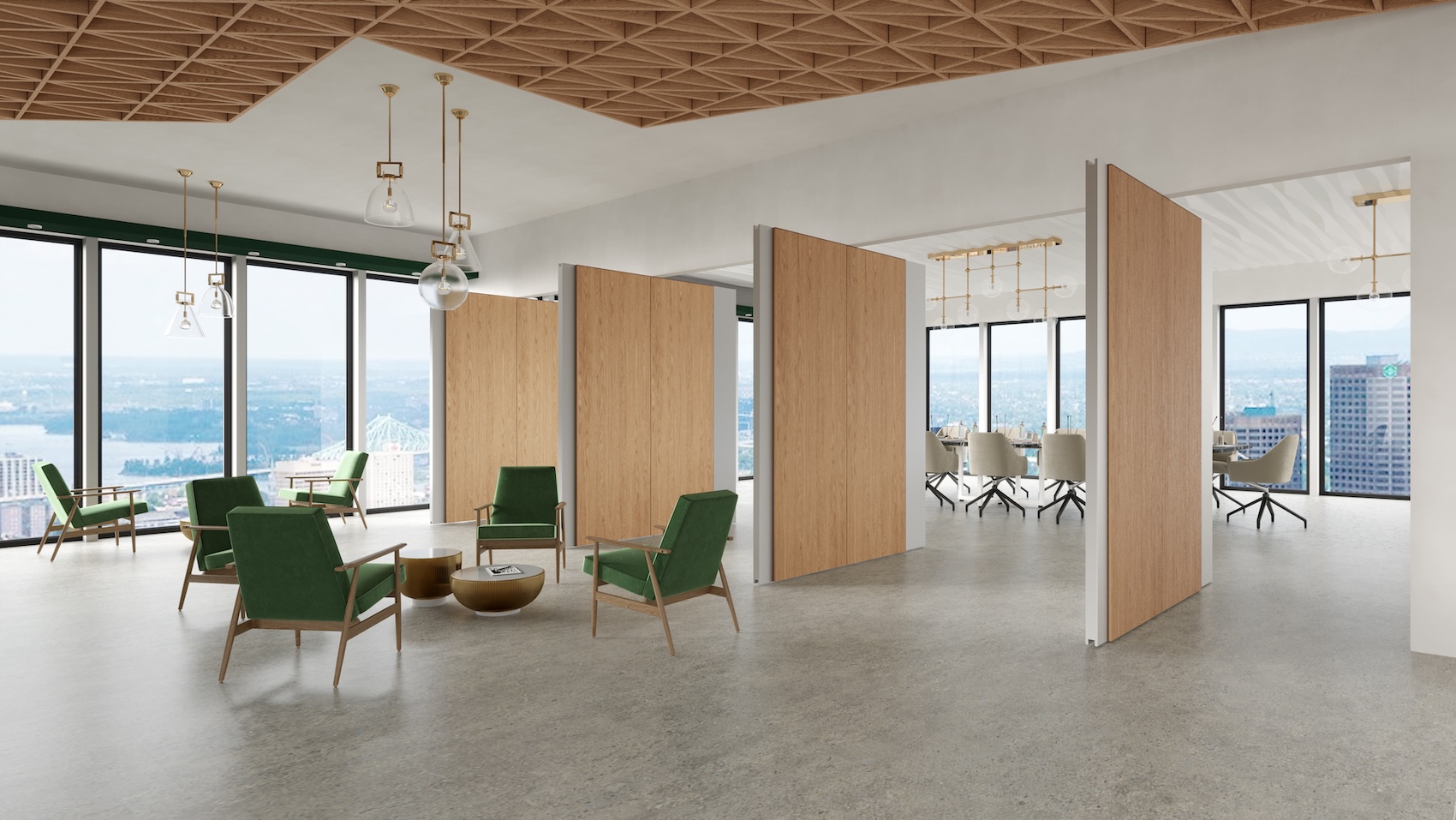The ins and outs of revolving doors
Capacity and type of use
While the above concerns are certainly important, the biggest issues in the specification of a revolving door are capacity and character of expected traffic. Architects will have to consider how many and what type of people are expected to enter and exit a facility. Will rush hours be a concern or will traffic be spread throughout the day? Will doors have to accommodate individuals with luggage or shopping carts? Capacity is based on type of facility and user demographic.
Automatic doors of any wing configuration, with large compartments, safety sensors and “push to slow” buttons are generally applicable for facilities accommodating families, children, the elderly, or rolling baggage and carts, including museums, hospitals, airports, large retail establishments, and hotels and casinos. Small office buildings, restaurants, and specialty, high-end retail buildings are ideal for three- or four-wing manual revolving doors. Optimal capacity is reserved for ‘trained traffic’—users familiar with the doors and the building who are either residents or employees who come and go on a regular basis.3

The various factors affecting capacity and user comfort include:
- diameter of the drum;
- throat opening;
- manual or automatic operation;
- compartment size and number of door wings;
- ANSI code requirements for maximum rotation speed and safety sensors; and
- positioning drive on manual revolving doors.
Traffic-type capacity
This is expressed in terms of x number of people per direction per minute. For example, ‘1×15’ refers to a one-way door that allows 15 people through in one minute, for a total of 15 people/minute. One-way doors, however, have limited application. The more typical capacity equation is ‘2×24,’ signifying a two-way door that allows 24 people per direction in one minute for a total of 48 people/minute.
When calculating throughout, an individual’s comfort zone should be considered. Most people would prefer a comfort zone around them that totals about 1 m2 (12 sf). To roughly gauge the capacity of a revolving door, one can divide a compartment area by this dimension and then multiply the number of compartments by the recommended number of revolutions per minute.
Diameter
The first element that influences capacity is diameter. With automatic doors, a larger diameter increases capacity. However, with manual doors, increases in diameter generally work to increase user comfort, as they are intended for one user per compartment. The heavier weight of increased diameter doors actually makes the door slightly harder to push, lowering the RPMs and thus slightly decreasing the number of people that move through.
It is interesting to note when the diameter of a door is increased by a certain ratio, the area of each compartment increases by a much greater ratio. Thus, for a slightly wider opening in the building envelope, the comfort and/or the capacity can be greatly improved—this is especially true for automatic revolving doors.
Throat opening
Another factor affecting capacity is the throat opening. By design, a four-wing door has a wider throat opening than a three-wing door of similar diameter. The wider throat opening is easier to pass through; therefore, it increases user comfort and capacity. In smaller-diameter doors, the throat opening width becomes more of an influential factor in determining capacity.









